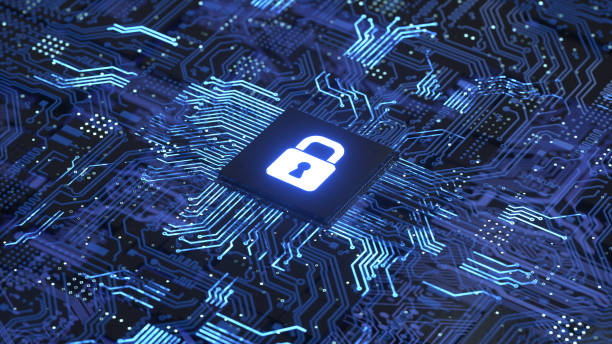The digital world is expanding at an unprecedented pace. Every day, billions of devices communicate, trade information, and perform critical functions that keep our societies and economies running. Yet, with every technological advance comes new risks—more sophisticated cyberattacks, more vulnerabilities, and more opportunities for malicious actors. In the 21st century, cybersecurity is no longer a secondary concern; it is the backbone of modern civilization. As artificial intelligence (AI) grows more capable and more pervasive, it is transforming both the nature of cyber threats and the defenses we create to combat them.
The future of cybersecurity in the age of AI will be shaped by a complex interplay between automation, intelligence, ethics, and human ingenuity. AI has the potential to revolutionize the security landscape—making systems faster, smarter, and more adaptive—but it also introduces profound risks. The same algorithms that detect threats can be used to create them. The same data that empowers defense can empower deception. Understanding this dual nature is essential for envisioning a secure digital future.
The Transformation of Cyber Threats
Cyber threats have evolved dramatically since the early days of computing. Once limited to simple viruses and nuisance hacks, today’s cyberattacks are highly organized, automated, and financially or politically motivated. Criminal networks, state-sponsored groups, and even autonomous systems now participate in digital warfare. AI is amplifying this transformation by enabling a new generation of attacks that are faster, more targeted, and harder to detect.
One of the most concerning developments is the emergence of AI-driven malware. Traditional malware relies on static code and predictable behavior, making it possible for security systems to recognize and neutralize it. AI-powered malware, however, can learn from its environment, adapt its behavior, and even disguise its digital footprint to evade detection. Using techniques such as reinforcement learning, these programs can modify themselves in real time, testing and refining strategies for bypassing firewalls, intrusion detection systems, and antivirus software.
Another emerging threat is the use of deepfakes and generative AI to conduct social engineering attacks. Deepfakes use neural networks to create highly realistic audio, video, or text content that mimics real individuals. Cybercriminals can use this technology to impersonate executives, government officials, or family members, manipulating victims into transferring money, revealing secrets, or granting access to secure systems. These attacks exploit the most vulnerable link in cybersecurity—the human element.
AI is also being weaponized in large-scale cyber warfare. Automated systems can now scan for vulnerabilities across global networks, orchestrate attacks without direct human supervision, and overwhelm targets with unprecedented speed. The integration of AI into cyber offense means that the response time available to defenders is shrinking dramatically. In this new environment, traditional defensive strategies based on human monitoring and manual response are no longer sufficient.
AI as a Force for Cyber Defense
While AI enables more complex cyber threats, it is also our most powerful tool for defense. Modern cybersecurity depends on the ability to analyze vast quantities of data, detect subtle anomalies, and respond faster than attackers can act. These are precisely the areas where AI excels. Machine learning algorithms can sift through terabytes of network traffic, system logs, and user behavior data to identify patterns that would be invisible to human analysts.
AI-driven systems can also automate the detection and response process. Through techniques like behavioral analytics, anomaly detection, and predictive modeling, AI can identify potential breaches before they occur. Instead of waiting for an attack to happen, AI-based defense can predict vulnerabilities and patch them proactively. For example, machine learning models trained on historical attack data can identify early signs of intrusion, such as unusual login attempts, subtle shifts in file access patterns, or irregular data transfers.
Another crucial application of AI in cybersecurity is automated incident response. Once a threat is detected, AI can isolate compromised systems, quarantine malicious files, and restore affected services without waiting for human intervention. This rapid containment capability significantly reduces the impact of breaches. In large organizations where millions of endpoints are connected, automation is the only feasible way to manage complex threats in real time.
AI can also help in the development of advanced encryption and authentication methods. Adaptive security systems can analyze a user’s behavior—typing rhythm, mouse movements, or even cognitive patterns—to verify identity more accurately than traditional passwords. This behavioral biometrics approach minimizes the risk of unauthorized access, even if credentials are stolen.
The Convergence of AI and Cybersecurity Research
The intersection of AI and cybersecurity has become one of the most dynamic fields in modern science and technology. Researchers are exploring ways to use machine learning not only to detect and respond to threats but also to make systems inherently resilient. For example, AI can be used to design self-healing networks that automatically repair themselves after an attack or intrusion. By analyzing network topologies and predicting failure points, these systems can reroute traffic and maintain functionality even under duress.
Adversarial machine learning is another crucial area of research. This field studies how AI systems can be manipulated or deceived by malicious inputs—known as adversarial examples. Hackers can slightly alter an image, sound, or dataset in ways that appear imperceptible to humans but completely fool AI models. Understanding and defending against these vulnerabilities is essential for building trustworthy AI systems.
AI-based security research also focuses on explainability and transparency. Many AI systems operate as “black boxes,” producing decisions without clear reasoning. In cybersecurity, this opacity can be dangerous. If an AI system flags a legitimate action as malicious or overlooks a real attack, human operators must understand why. Explainable AI (XAI) seeks to create models that are both powerful and interpretable, ensuring that human oversight remains effective.
Predictive Cybersecurity and Proactive Defense
The future of cybersecurity will shift from reactive defense to predictive and proactive security. Traditional approaches rely on identifying known threats and responding after they are detected. In contrast, AI enables organizations to anticipate attacks before they occur by analyzing patterns and trends.
Predictive cybersecurity systems combine machine learning, big data analytics, and threat intelligence to forecast potential attacks based on global data streams. They can monitor open-source intelligence (OSINT), dark web activity, and communication networks to identify early indicators of planned cyber campaigns. This form of anticipatory defense allows organizations to prepare countermeasures, update security protocols, and even coordinate with other entities before an attack unfolds.
AI can also predict internal risks by analyzing employee behavior and access patterns. Insider threats—whether from negligence or malice—remain one of the most difficult challenges in cybersecurity. By continuously monitoring for anomalies in user activity, AI can detect early signs of compromised accounts or data exfiltration attempts. These predictive insights make it possible to prevent security incidents before they escalate into full-blown breaches.
The Ethical Challenges of AI in Cybersecurity
The integration of AI into cybersecurity brings not only technical challenges but also deep ethical concerns. AI systems are only as unbiased and reliable as the data they are trained on. If the datasets used for training contain biases or inaccuracies, the resulting models can make unfair or incorrect decisions. In cybersecurity, such errors can have serious consequences—wrongly labeling a user as a threat, blocking legitimate access, or failing to detect genuine attacks.
Moreover, the use of AI in surveillance raises questions about privacy and civil liberties. Security systems powered by AI can monitor vast amounts of personal data—emails, social media activity, location information—under the justification of preventing cybercrime. Without proper regulation and transparency, these systems could easily be abused for mass surveillance or political control.
There is also the ethical dilemma of autonomous defense systems. If AI is given the authority to respond automatically to perceived threats, it might take actions that have unintended consequences—such as disabling critical infrastructure or launching counterattacks against innocent systems. Establishing boundaries for AI autonomy in cybersecurity will require careful policy design and international cooperation.
Human-AI Collaboration in Cyber Defense
Despite the growing power of AI, humans will remain indispensable in cybersecurity. Machines excel at pattern recognition and rapid computation, but they lack the broader context, intuition, and ethical reasoning that human analysts bring. The future of cybersecurity will therefore depend on collaboration between human expertise and machine intelligence.
AI can act as an assistant that amplifies human capabilities rather than replacing them. Automated systems can handle repetitive, data-intensive tasks, freeing human experts to focus on strategic analysis, creative problem-solving, and decision-making. This hybrid approach, often referred to as “augmented intelligence,” leverages the strengths of both entities.
Training cybersecurity professionals to work effectively with AI tools will be critical. Future analysts must understand how AI models operate, what their limitations are, and how to interpret their results. Likewise, AI systems should be designed with interfaces that allow seamless interaction and oversight. The human-machine partnership will be essential for building adaptive and resilient defense architectures.
The Role of Governments and International Cooperation
As cyber threats transcend borders, the responsibility for securing digital infrastructure extends beyond individual organizations. Governments play a crucial role in establishing cybersecurity standards, promoting information sharing, and regulating the ethical use of AI.
Many nations are already investing heavily in AI-driven cybersecurity initiatives. National defense agencies are developing autonomous systems capable of monitoring and responding to cyber warfare in real time. However, this militarization of cyberspace also raises concerns about escalation and unintended conflict. Without international norms and agreements, AI-based cyber weapons could trigger global instability.
Collaborative frameworks such as the Budapest Convention on Cybercrime and emerging AI ethics guidelines from organizations like UNESCO and the OECD aim to foster international cooperation. Future efforts must go further, establishing shared protocols for AI security research, cross-border incident response, and collective deterrence against cyber aggression.
Quantum Computing and the Next Frontier of Cybersecurity
Beyond AI, quantum computing represents another paradigm shift that will reshape cybersecurity. Quantum computers use qubits—quantum bits capable of existing in multiple states simultaneously—to perform calculations far beyond the reach of classical systems. While this promises breakthroughs in science and technology, it also poses a major threat to current encryption methods.
Most modern encryption relies on mathematical problems that are difficult for classical computers to solve, such as factoring large numbers. Quantum algorithms, like Shor’s algorithm, could solve these problems exponentially faster, rendering traditional encryption obsolete. This looming threat has accelerated the development of post-quantum cryptography—encryption methods designed to withstand quantum attacks.
AI and quantum computing together could redefine cybersecurity. AI can assist in developing quantum-resistant algorithms, while quantum computing could enhance AI’s processing power. However, if misused, these technologies could also create unprecedented levels of cyber warfare. Preparing for this dual-edged future requires coordinated global research and forward-looking policy.
AI-Powered Identity and Access Management
As digital ecosystems expand, managing identity and access becomes increasingly complex. Traditional methods such as passwords and two-factor authentication are no longer sufficient against sophisticated attacks like phishing and credential theft. AI provides a pathway to more secure and adaptive identity management.
AI-driven systems can analyze biometric data, user behavior, and contextual information to authenticate identities dynamically. For example, an AI model can continuously verify a user’s legitimacy by analyzing their typing speed, browsing habits, or device usage patterns. If it detects anomalies—such as a sudden change in location or unusual access time—it can prompt additional verification or restrict access automatically.
This continuous authentication approach creates a more secure environment without compromising user convenience. It also reduces the likelihood of false positives and negatives, since AI can adapt to individual behavioral variations over time.
Data Security, Privacy, and AI Governance
In the AI era, data is both the most valuable asset and the greatest vulnerability. Cybersecurity must therefore focus not only on defending networks but also on protecting the integrity and privacy of data itself. AI systems rely on vast datasets for training, and any compromise in data quality can lead to flawed models or security breaches.
Data governance frameworks must ensure that sensitive information is collected, stored, and processed ethically. Techniques such as differential privacy and federated learning are becoming central to secure AI development. Differential privacy adds mathematical noise to datasets, ensuring that individual information cannot be reverse-engineered. Federated learning allows AI models to learn from distributed data sources without transferring the raw data itself, reducing exposure to breaches.
Regulatory frameworks such as the European Union’s General Data Protection Regulation (GDPR) and emerging AI Acts provide a legal backbone for responsible data use. Future cybersecurity strategies will increasingly integrate these principles to build public trust in AI-driven systems.
The Economic and Social Impacts of AI in Cybersecurity
The economic implications of AI-driven cybersecurity are immense. As cyberattacks grow in scale and complexity, the cost of breaches—measured in financial loss, reputational damage, and operational disruption—continues to rise. AI has the potential to significantly reduce these costs by automating detection, minimizing downtime, and enhancing resilience.
However, automation may also disrupt the job market. Many routine cybersecurity roles could be replaced by AI, while demand will grow for experts in AI ethics, data science, and cyber policy. The workforce of the future will need continuous reskilling to stay relevant in an AI-dominated landscape.
Socially, the rise of AI in cybersecurity could alter how individuals interact with technology. Trust will become a central issue. Users must feel confident that AI systems are protecting rather than exploiting their data. Transparency, accountability, and education will therefore be as important as technical innovation.
The Road Ahead: Building a Secure AI Future
The future of cybersecurity in the age of AI will be defined by adaptation, collaboration, and foresight. As threats become more automated and intelligent, defenses must evolve just as rapidly. The key lies in designing AI systems that are secure by design, transparent in operation, and aligned with human values.
Investment in interdisciplinary research will be vital. The convergence of computer science, cognitive psychology, ethics, and law will shape policies and technologies that balance security with freedom. Global cooperation must replace competition in areas where collective safety is at stake.
Education will also play a decisive role. Training the next generation of cybersecurity professionals to understand both AI’s capabilities and its dangers will determine how well societies can navigate the challenges ahead. Cybersecurity literacy must extend beyond experts to every citizen, as the human factor remains the first and last line of defense.
Conclusion
The age of AI marks a turning point in the history of cybersecurity. Artificial intelligence is transforming the battlefield, creating both new vulnerabilities and powerful defenses. It can predict attacks before they occur, automate responses in real time, and adapt to evolving threats. Yet it can also be exploited to deceive, infiltrate, and destroy.
The future of cybersecurity will depend on our ability to harness AI responsibly. It requires not only technological innovation but also ethical governance, international collaboration, and human wisdom. If we succeed, AI will not only protect the digital world—it will redefine what it means to be secure in an interconnected civilization. The challenge is immense, but so too is the opportunity. In mastering AI, humanity has the chance to build a cyber future that is not only intelligent, but also just, resilient, and secure for generations to come.






